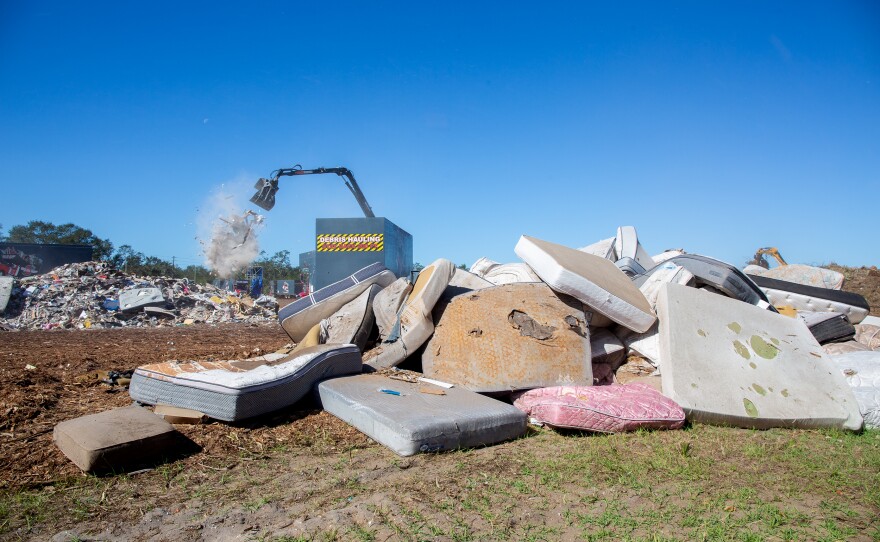Mountains of trash are piled about 30 feet high in a dirt lot in St. Petersburg. This is where all of the city's hurricane debris is taken for processing.
The site, near 72nd Street at 22nd Avenue North, offers a glimpse into what happens to the wreckage from a hurricane.

"What this site does is it allows for us to be able to collect that debris off the right-of-way that was placed there by the citizens. Then we process the debris so it can be then be hauled out to different final disposal locations throughout the state of Florida," said Reed Loper, vice president of CrowderGulf, the main debris collector contracted by the city.
One pile is reserved for vegetative debris like tree limbs and dirt. Another is made up of drywall, carpet and furniture, which will get compacted and likely sent to a landfill.
Electronics and appliances, like refrigerators and washing machines, are processed separately and sent to different recyclers.

Statewide, the amount of debris collected totals more than 28 million cubic yards as of Wednesday morning, according to a state dashboard. In the greater Tampa Bay region, more than 13 million cubic yards have been collected.
Loper said the severity of this year's hurricane season produced 1.3 million cubic yards of debris in the St. Petersburg area.
"That's more than the past three hurricanes that affected this area combined, which would've been hurricane Irma, Idalia and Ian," Loper said.
It's hard to estimate just how much still needs to be removed from neighborhoods, Loper said. But he suggests residents lay unwanted materials on their streets' rights of way as soon as possible for collection.
Guidelines from the Federal Emergency Management Agency say to separate different types of debris into respective piles: large appliances, construction, vegetative, hazardous waste and electronics.
Residents are also welcome to drop off debris. Designated sites should be listed on county websites.
In Pinellas County, each city is managing its own storm and debris cleanup.
When it comes to the environmental impacts, Loper said it depends on what's being collected.
"White goods" such as refrigerators and freezers are extracted of the chemical Freon before materials are sent to recyclers.
Other debris that cannot be recycled are "mechanically compacted to try to reduce by volume so that we're not taking up too much air space in the different landfills," Loper said.
But with natural disasters like hurricanes becoming more frequent or stronger, Loper wonders if there will be enough sites to process debris in the future.
"The available space for debris management sites is disappearing," he said. "These sites are absolutely 100% key to the effectiveness and the efficiency of these operations."












